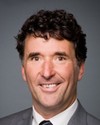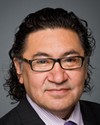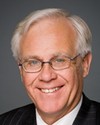Thank you very much. I'm very pleased to be here this morning with the committee. Indeed I am here with a colleague, Stéphane Michaud, who's our head of operations for emergency response.
I listened to the earlier discussion you had with colleagues from Foreign Affairs and CIDA. I think you've already heard quite a bit about the Syrian Arab Red Crescent. In fact, a good part of my remarks will paint for you a portrait of the capacity and the nature of the Red Cross/Red Crescent in the country.
I will make remarks that focus on four different areas. I'll talk a bit about the humanitarian situation on the ground. Let me just say, of course, that we're very aware that the humanitarian situation is played out against a very complex political dynamic. As the Red Cross, we're not here to speak about that. We will focus our remarks and any discussion we might have with you on what we know in terms of day-to-day experience, in terms of the humanitarian situation. I will update you as to the humanitarian activities of the Red Cross and Red Crescent movement inside Syria. I'll make a couple of remarks about the broader regional impact, and then lastly a few words on humanitarian challenges we face, as we speak.
It might be helpful for the committee for me to take a minute and remind you of the composition and mandate of the Red Cross/Red Crescent, because already you've heard about the International Committee of the Red Cross, the international federation, and the Syrian Arab Red Crescent. You may well be wondering what all these different actors are. We are the largest and longest-standing humanitarian network in the world. We're non-partisan, and our mandate is to provide assistance to people affected by conflicts and natural disasters in a neutral and impartial manner, independent from governments.
The Red Cross/Red Crescent movement is made up of nearly 100 million members, volunteers, and supporters in 187 countries where there are national societies around the world. Our movement has three main components: the national societies themselves in these 187 countries; the International Federation of Red Cross and Red Crescent Societies; and lastly, and importantly, the International Committee of the Red Cross.
At the local level, in 187 countries there is a Red Cross or Red Crescent national society. Just like here in Canada with the Canadian Red Cross, each national society works within its own borders to respond to the humanitarian needs of the people who are affected by disasters or conflicts in its country. This is certainly the case in Syria, where the Syrian Arab Red Crescent is extremely active. Many national societies offer programs such as first aid training, community disaster preparedness, or health services. You can see how these activities go a long way to responding to humanitarian crises.
All 187 national societies are members of the International Federation of Red Cross and Red Crescent Societies, which coordinates support to national societies in need.
The third component is the International Committee of the Red Cross. It is an organization that focuses on protecting the lives and dignity of victims of armed conflict and other situations of violence, as well as providing humanitarian assistance.
In Syria and around the region, all of the components of the Red Cross/Red Crescent movement are active and operational.
Before I go on, I just want to underline the relationship between the Canadian Red Cross and our own government. We are fully operational here in Canada as a national society, and we work very closely with Canadian public authorities to fulfill our mandate in Canada. For our international operations, we enjoy a long-standing relationship with the federal government. This was underlined in June of this year when we signed a memorandum of understanding for a strategic partnership with the Canadian International Development Agency. This MOU will allow the Canadian Red Cross, in partnership with CIDA, to focus on developing national societies in other countries so they're better able to respond to disasters and conflicts; it will improve our own capacity to respond quickly and effectively to humanitarian crises; and it will increase public awareness of Canadian humanitarian efforts.
Now let me turn to the actual humanitarian situation on the ground in Syria. We're monitoring the situation in Syria and in the region very closely. We are in regular contact with all of our Red Cross/Red Crescent partners, including the International Committee, the International Federation, the Syrian Arab Red Crescent, and the other Red Cross and Red Crescents in the region, as well as other humanitarian actors.
The Syrian population in cities and rural areas is facing a very stark situation. The very nature of the conflict is such that it's conducted in the streets, in the homes, and in the public buildings of neighbourhoods and communities.
People are living in a context of constant fear and insecurity, lawlessness, and increased criminality, and with a lack of access to the basic necessities of life: food, water, medicine, and medical services. Some Syrians have not been able to work for months. Many are unable to pay their rent or buy basic supplies for their families. The unemployment rate in certain parts of the country has quadrupled.
Because of the violence and worsening conditions, there are now over 2.5 million people in need of humanitarian assistance, including 1.2 million Syrians who have lost their homes and have been forced to move. More than 336,000 Syrians have been forced to seek refuge in neighbouring countries and in North Africa.
These hardships will only increase with the approaching winter. We can expect fuel shortages, the breakdown of heating and electrical systems, and a lack of basic water and sanitation.
Basic infrastructure in the country continues to be targeted and destroyed as part of ongoing hostilities. Hospitals in various areas continue to operate but have suffered from loss of power, water, and supplies, including medical staff. The WHO has recently assessed that 67% of public hospitals have been affected, and fully half of the ambulances in the country have been attacked. Distribution of pharmaceutical products has been disrupted and there are shortages of essential drugs.
Thankfully, it is still possible to move relief supplies from Jordan, Lebanon, and Turkey into the country; however, we are often facing challenges in distributing relief items due to the very volatile security conditions. Having said that, the Syrian Arab Red Crescent, the International Committee, and others are still active in many parts of the country, in both government- and opposition-controlled areas.
The Syrian Arab Red Crescent is playing a very critical role in Syria today. The Red Crescent is the largest national humanitarian organization in Syria. It was created in 1942 and is present across the country, with the headquarters in Damascus, a branch in each of the 14 governorates, and a number of additional sub-branches.
The Red Crescent is fully committed to the Geneva conventions and is governed by the fundamental principles of the Red Cross movement. It has a strong history and a proven track record in emergency health and primary health care, in disaster preparedness, in response and risk reduction, and in providing psychological support. It has approximately 10,000 volunteers trained to offer its core services, including first aid and ambulance services.
Since the beginning of the tensions in Syria over 18 months ago, the Red Crescent has substantially scaled up its relief operations to meet the growing needs. It is currently distributing food parcels in a very successful manner and is assisting over 850,000 individuals each month. I just note that this may well grow to 1.5 million per month in the coming weeks, as the WFP plans to expand its reach through the Syrian Arab Red Crescent.
The Red Crescent has set up and is expanding its medical and first-aid posts. It has expanded its ambulance services in certain areas. I need to note to the committee that with this tremendous capacity of the Red Crescent Society in-country, reaching all parts of the country, it has not been without its own tragedy. Six of the Red Crescent members have been killed while delivering humanitarian assistance during these hostilities.
The Red Crescent is an organization with many young volunteers. Every day, new volunteers are coming forward, wanting to be part of the Red Crescent effort. To date, the Red Crescent has been able to provide enough briefing and training so that these young volunteers can deliver humanitarian services in a neutral and impartial manner.
The International Committee of the Red Cross continues to provide us with assurances that the Red Crescent is respecting humanitarian principles in delivering assistance. The Red Crescent is also acting as a national coordinator for international assistance and is the implementing partner of many of the UN agencies, as my colleague Leslie Norton shared with you in her remarks earlier. Also, the Red Crescent is a facilitator for other international organizations present in the country.
The International Committee of the Red Cross is also a very important player inside Syria. It's working right now to support the Red Crescent in areas directly affected by the conflict, often conducting its relief operations hand in hand with the Red Crescent Society. The International Committee is supporting medical relief and health services, as well as food distribution. In addition, as you may well know, the International Committee has a particular relationship and responsibility with regard to the Geneva conventions, and this allows it to have direct dialogue with governments.
The ICRC has met with President Assad, as well as the ministers of foreign affairs, the interior, health, and so on, and continues to dialogue with all parties to the conflict, including opposition groups in Syria. This is to advocate for the full respect of international humanitarian law and the protection of civilians and detainees.
On behalf of the International Committee and the whole Red Cross movement's efforts, I would like to thank the Canadian government for the contribution of $1.5 million so far provided to the International Committee earlier this year.
The International Federation of Red Cross and Red Crescent Societies is also active in Syria, assisting the Red Crescent to support displaced and local populations. An emergency fundraising appeal was launched in July this year, seeking $27.2 million to support health, relief, and livelihood activities for 200,000 individuals. To date, this appeal has only covered 60%.
The Canadian Red Cross would also like to thank the recent support of the Canadian government for contributing $2 million to the emergency fund. For our part, the Canadian Red Cross has also provided $175,000 from our own funds.
We are actively monitoring and liaising with many contacts on the ground and we're in regular contact with the Canadian government through CIDA and Foreign Affairs regarding the situation and response.
I'll turn soon to humanitarian challenges, but let me first make a few remarks about the regional impact. As we've already mentioned, and as the colleagues from Foreign Affairs and CIDA mentioned, there are already 336,000 people registered as refugees, or awaiting registration, in the countries around Syria. These include Turkey, Lebanon, Jordan, and Iraq. The UNHCR is currently predicting that unless there is a positive breakthrough, the number of refugees will double before the end of the year.
The pressure on local communities and host families in neighbouring countries, and of course on the governments of these countries, is not to be underestimated. It's important to note that there are refugees who are living in actual refugee camps, but there are also many refugees who are living with host families, so we need to have a very nuanced approach in terms of helping the host families and communities, as well as people actually in organized and registered camps.
In each case the national society of the country is playing an active role in assisting refugees, whether or not they're in established camps. In order to respond to this regional dimension, the International Federation launched an appeal in August seeking support, and this appeal has only received 32% of coverage to date. This appeal aims to provide assistance to beneficiaries in Lebanon, Jordan, and Iraq.
To conclude, Mr. Chair, the Red Cross/Red Crescent movement is able to have a wide range of activities in Syria and in the region, thanks in large part to the support of the Canadian government as well as other donor governments. This support has allowed us to provide assistance to those affected by the conflict in Syria and in the region. We are delivering our assistance in full respect of our principles of independence, neutrality, and impartiality. We are in dialogue with both the government and opposition forces.
Our main challenge right now is access. Accessing certain parts of the country is difficult and volatile because of the very difficult security environment. Linked to our security concerns, another important challenge is the actual threat and attack on humanitarian health workers and health facilities. This is a humanitarian issue that is experienced again and again in situations of conflict, and we have recently launched an awareness campaign entitled “Health Care in Danger” to bring more attention to this ongoing humanitarian challenge. I've included information about this campaign in your information packages.
As I mentioned earlier, the Syrian Arab Red Crescent has lost six workers, including the secretary general, who were attacked while performing lifesaving humanitarian activities. Many of their ambulances have been shot at and volunteers have been wounded. These attacks have an immediate impact, and they also create a long-term effect, as it means fewer and fewer people will actually have access to critical medical care. I remind you that attacks on health professionals, volunteers, and health facilities are all violations of international law and are unacceptable, and we call on the Government of Canada to join its voice with ours in calling for full respect of the medical mission.
In conclusion, whichever scenario one subscribes to now, we anticipate humanitarian needs will only increase in the face of the approaching winter months, as the winter's cold weather makes the plight of displaced and vulnerable families that much more desperate.
At the Red Cross it's our job to plan for the worst and be prepared for the unexpected, and we have contingency plans accordingly. We foresee an increased need to respond both inside and outside Syria, and we encourage the Canadian government to provide support to our regional appeal, since there is great need for support for Syrian refugees who have already fled and those who will be fleeing to neighbouring countries.
I hope these brief remarks have provided you with an initial sense of the humanitarian dimensions of the situation, and I look forward to responding to your questions.
Thank you very much.









